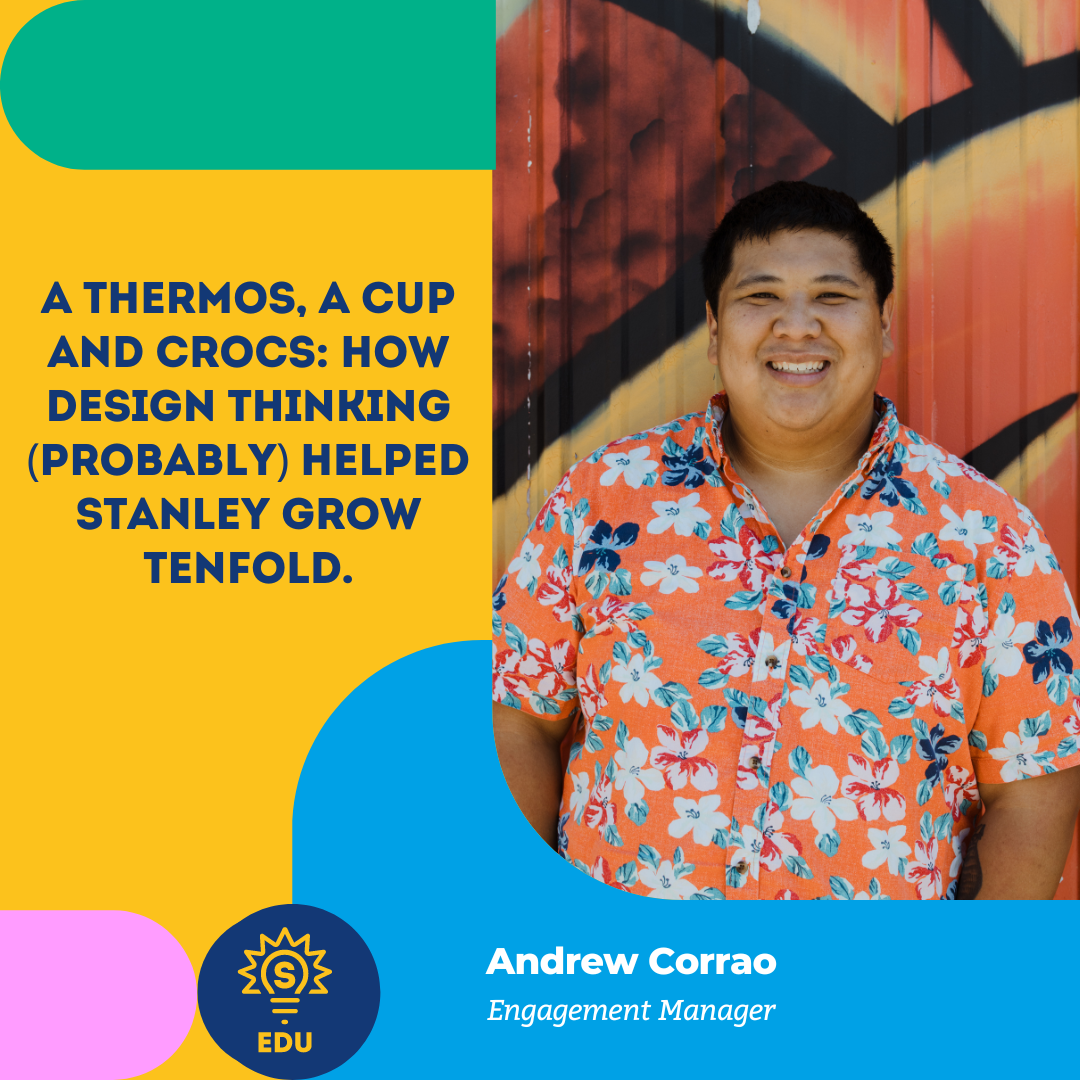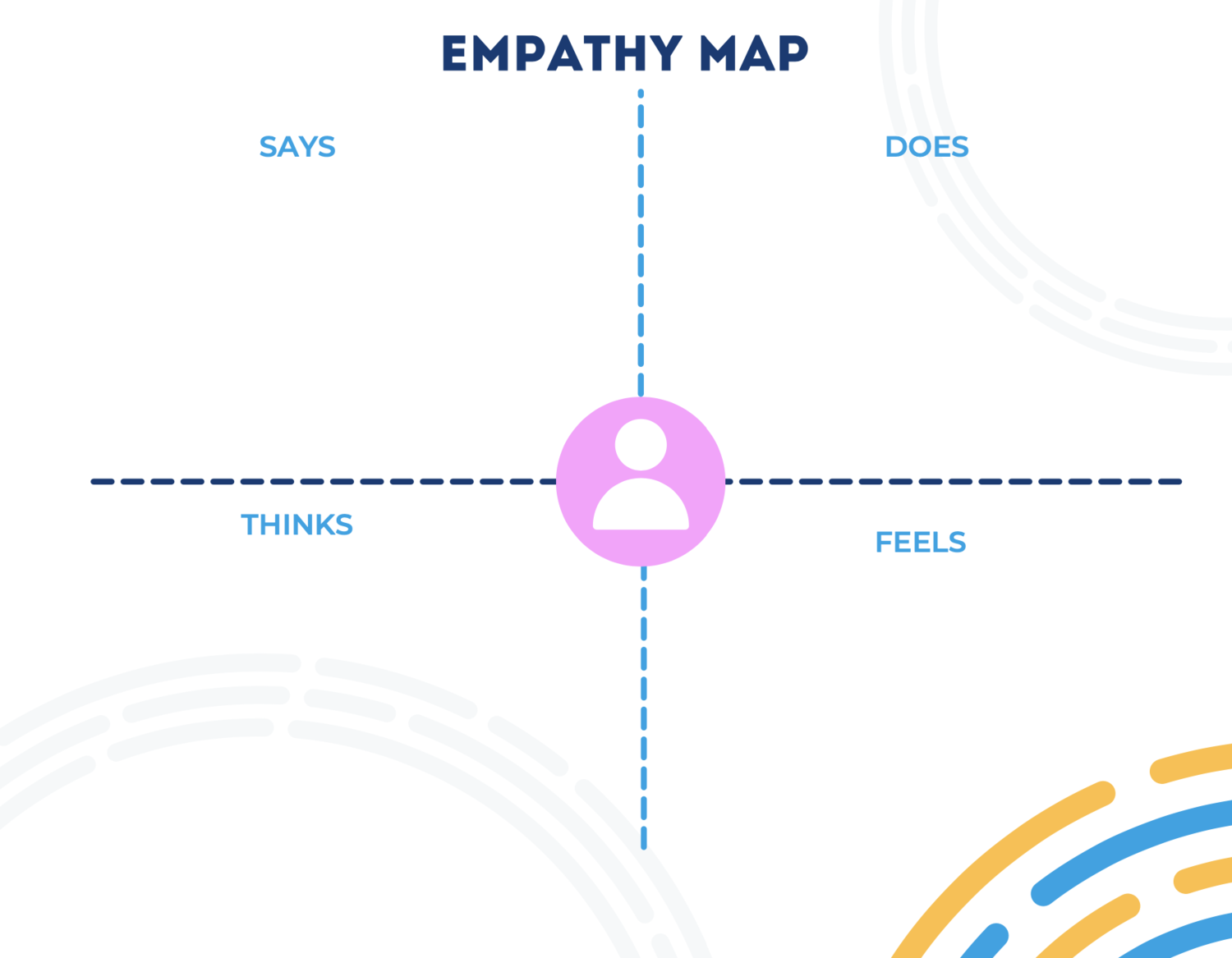A thermos, a cup and Crocs: How design thinking (probably)helped Stanley grow tenfold.
When I was in high school I had a teacher I spent a lot of time with. He was the advisor for our Science Olympiad Club, and while there are a lot of fond memories that come to the surface as I recall my time in that club, one memory that sticks out to me was that our advisor was rarely without his Stanley Thermos (like the one pictured here).
These bulky, unstylish yet super functional and durable thermoses weren’t seen very often in schools much less offices, board rooms or upper-middle-class cabinets. My advisor was the exception that made the rule. These thermoses were used primarily by manual laborers and outdoorsmen whose lifeblood often included multiple cups of piping hot coffee throughout the day.
Fast forward to the present day, however, and you’d be hard-pressed to not encounter a Stanley cup. But how did a company like Stanley, who has been around since before World War I, reshape its brand image and grow its revenue from $70 million to $700 million, and more importantly why should you care, and what can we learn from them that will help today's kids?
To answer this question, first we need to start with the idea that Stanley, a 110-year-old company, cannot do the same thing for 110 years and expect the world around them to stay static. Historically, the world has a tendency to flip the status quo on a whim, and with the progression of new technologies and trends at a faster rate than ever before, companies and institutions (including education) should be ready and willing to pivot along with the rest of the world. The images below are archived shots of the Stanley website as recent as October 2020.
Stanley Website on October 2020
When we work with students on design thinking, we often ask them “What story are you telling when you are pitching?” and “What do you want your audience to think and feel?”
For Stanley, I ask you what story does this image convey? Personally, it tells me that Stanley is for those who like the outdoors. This is a brand made mainly for men who work outside or people who are camping who need a container to keep their beverages HOT.
Fast forward to today’s site and this is what you’ll find.
Stanley’s Current website
While there are only three years of change between these two web pages you can see the transformation that Stanley has gone through. The story they are telling now is that this is an everyday brand for women, parents and kids. Do they still have these industrial looking thermoses that seem like they could stop a bullet? Yes, of course. However their site now tells us that what they actually offer is a product that is not only appropriate, but perhaps needed in an office, school or home environment.
But the key question is WHY did Stanley change. Afterall the “Quencher,” Stanley’s leading product, was created in 2016. But sales were so middling that by 2019 Stanley stopped restocking and marketing its now flagship product. Within the answer to that question is the nugget of truth that is relevant to the inner workings of the day-to-day life of students and teachers, but also maybe the key to transforming our educational system. And it all starts with a completely different, yet very similar company —Crocs.
Since this is a story about Stanley and drinkware, we won’t dive too deeply into how Crocs went from a fledgling ugly shoe company to selling the hottest shoes on the market (both of my kids have a pair), but it’s important to understand that the undeniable parallels between the two companies, and there is much you can learn from the Crocs story as well. The lesser known truth is that , there are commonalities in these two stories because the same person led the charge to pull a U-turn at both companies. That man is Terence Reilly, and this marketing maven has a lot to teach us about how design thinking can alter the course of industry, and thus history.
In 2020, after seven years of creating one of the hottest and most successful branding strategies at Crocs, Stanley hired Reilly to be their next president. This wasn’t because Stanley wasn’t doing well. By definition, Stanley was exactly who they should be as a 110-year old company. They had loyal followers, consistent and reliable revenue and everyone was happy, in fact, $70-Million-in-annual-revenue, happy. But what’s better than $70 million? How about $700 million? And to get that they needed the right guy with the right strategy.
So what is that strategy and how can we translate that for use in the classroom?
In a recent article by Inc Magazine, Reilly said that he had “heard lots of stories that ‘Oh, my dad had a Stanley. My grandpa had a Stanley.’ If we could turn those stories from dad and grandpa to my mom, my sister, me, then we would be on to something” and thus the effort to grow its customer base began.
One of the empathy tools we use with our trainings.
This is the first connection that we can learn from, the idea that an organization should change with the world, rather than expecting the world to change for it. Reilly knew that women and kids weren’t going to be buying some hammertone green thermos that looks more like a weapon than a drinking container. To appeal to them more, the team at Stanley incorporated what we at STARTLAND EDU like to call “Empathy work,” to determine what these new customers might want from a product. They threw out the same old color palette and added pastels and bright colors. They began to think of their products as less of rugged camping equipment and more of an everyday accessory and added better handles and straws for COLD drinks.
Simply put, Stanley changed their whole branding strategy because they saw that there was a whole segment of consumers out there who were not using their product. Rather than asking those consumers to change their lifestyles to adapt to the company, the company changed their products to adapt to the consumer.
Similarly, we know that students and teachers aren’t buying education techniques that were used on their parents, at least not by choice. In fact, if a district hasn’t made significant changes since the onset of COVID-19 they are playing from behind. The world has changed dramatically and the idea that pre-COVID practices are still the best is antiquated. And yet the system has been resistant to changes that meet the students, parents and teachers on their ground, opting to again, ask the consumer to adapt their lifestyles to that of the system. We still put our kids on the bus at the same time, use the same textbooks, and use physical space the same way we did before COVID.
But it doesn’t have to be that way. There are organizations and districts that have prioritized innovating and changing the way we do education. The new ideas and innovative practices are things we should look at and track to see their success, but more immediately we should look at why these organizations have changed the way they are doing business. They have embraced the idea that education can and should be iterated on and changed. It’s an evolving industry that will change regardless of an organization's willingness to follow suit. The organizations that are truly being innovative have embraced a design thinking mindset by creating a bias towards action rather than doubling down on the status quo even if that means their first (or second or third) iteration isn’t perfect.
TIKTOK: KAITLINSONDAE
There are a lot of lessons we can learn from Reilly, Crocs and Stanley. Their stories are a treasure trove for any would-be marketer, but THAT is the little nugget that can, and should change education. We cannot be so scared of failure that we become okay with having a safe yet middling 110-year old hammertone green thermos as a product in a day where a bright pink Valentines Day tumbler will have people camping out at Targets.
In fact, if you’re looking for inspiration for that mentality, that change is good and we can do it now, look no further. There are a ton of examples and cases of districts changing with the times, so they can better serve their consumers. Look at Kansas City Public Schools, who started an evening academy (I was a trial teacher, conducting two-hour sessions virtually during the pandemic from 5 - 7:00pm), to better reach students who might be working during the day to support their families. Check out what North Kansas City Schools (and many other districts) are doing to connect curriculum to the world around us by starting student-run businesses like Class Act Coffee. And this change isn’t relegated just to the decision makers in districts. Check out what is happening here in Kansas City as districts and community partners collaborate together with the Real World Learning Initiative and how it’s changing how we view the changing world of education. Or look at Multi Studio, an architecture firm that designs innovative educational spaces, as well as investing in STEAM ideologies through their non-profit Steam Studio. And of course there are schools like Basehor-Linwood that changed its whole model to give students the opportunity to immerse themselves in the Design Thinking framework through their Innovation Academy.
These are just a few examples of how educational organizations are working today to change education tomorrow. Will all of these ideas make it through to become part of the fabric of our education system in the future? No. Some will work, some won’t and everything will have to be innovated and iterated as the world changes, but the fact that we are trying is something to be excited about. There IS momentum, there IS movement, and there IS hope.
So grab your Stanley, throw on your Crocs, and get off the bench. We need more innovation, ideation, and empathy. Education is one of the few industries where the users (students and children) rarely get to actively participate in redesigning their system. We have a responsibility to the current and future generations to let go of what’s not working and design for what could be. Who knows, maybe your next idea will have students camping out at our schools because they are so excited for their education.
Ready to rethink teaching and learning in your community?
Contact Startland Education to hear how we can help.








